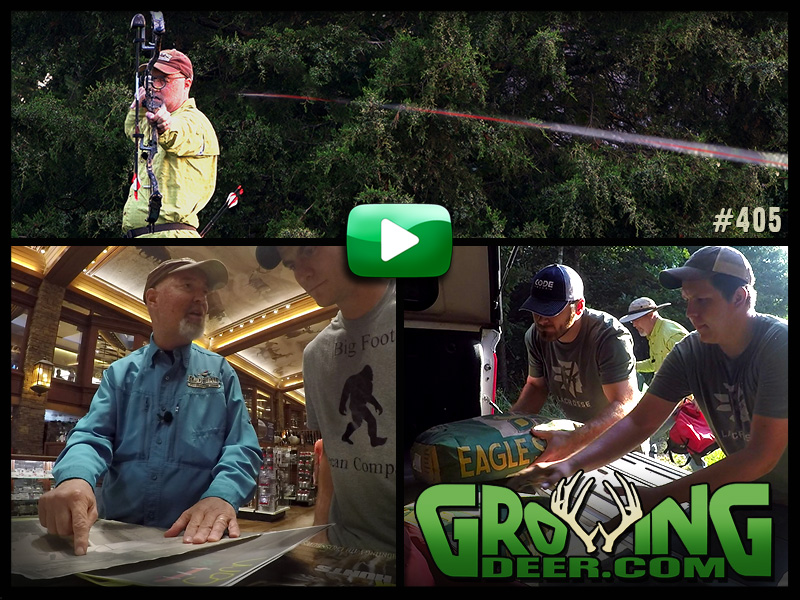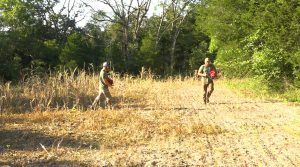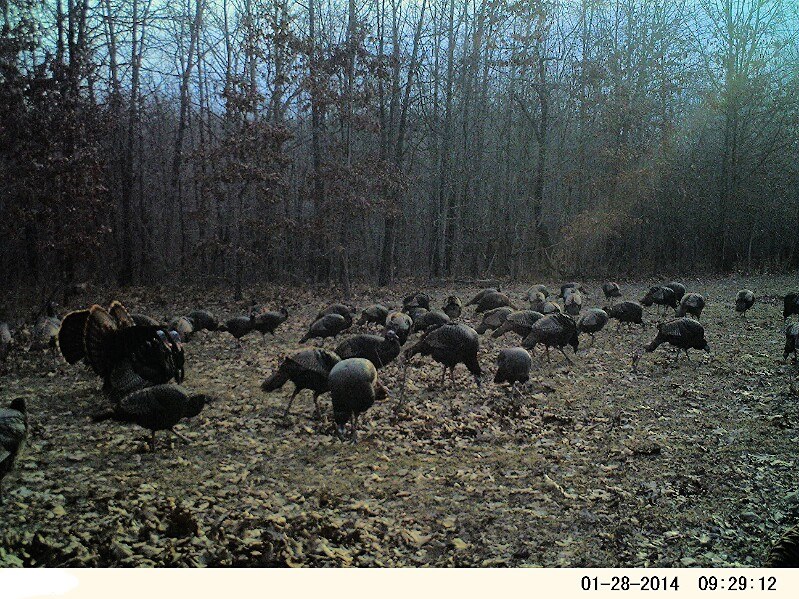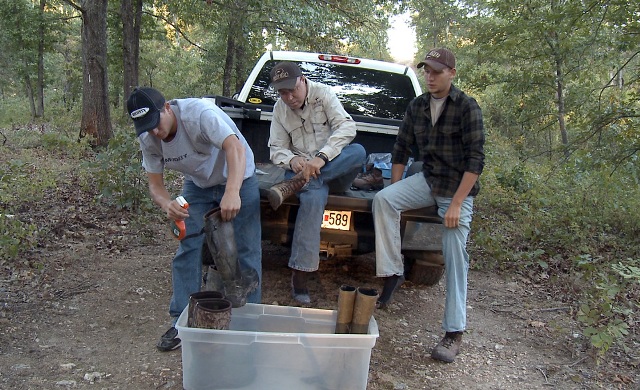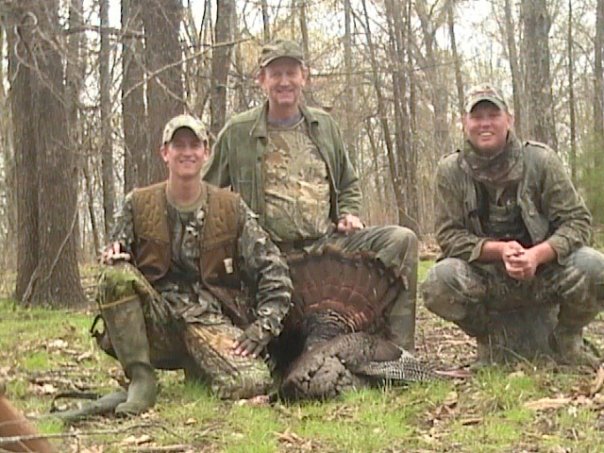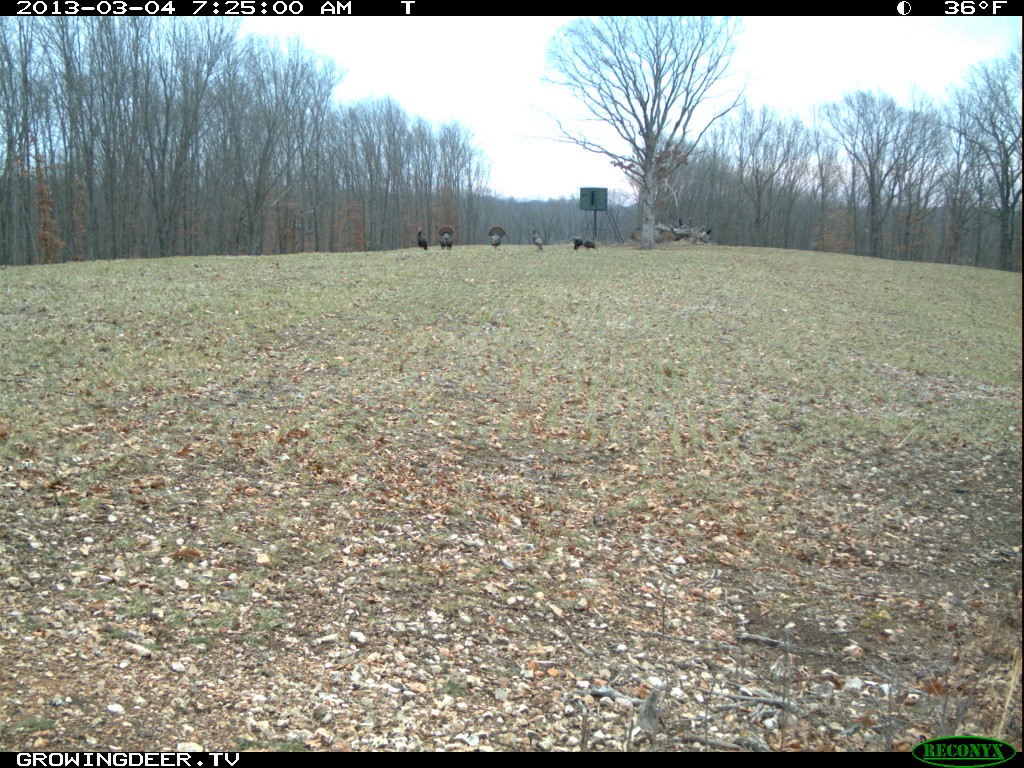Category: Trail Cameras
Planning, Practicing And Planting: 3 Things To Do Now To Prepare For Deer Hunting – Episode #405
New Video
Not all hunting and habitat management plans are developed in the field or the office! Watch as Daniel and Grant visit with landowners about wildlife management at the Bass Pro Fall Classic – in store! Then on to the bow range where they share tips to prepare for opening day of bow season. Also, with rain in the forecast, watch for an easy, quick way to plant a small food plot.
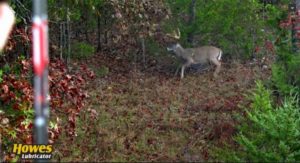 Short Clip:
Short Clip:
Where do you aim when bow hunting? Find out why Grant aims at the lower third!
New Weekly Blog:
Internships are a great way to gain experience in the wildlife field. Meet the two new interns at The Proving Grounds in this week’s blog!
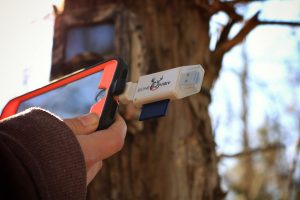
Tip of the Week:
Checking cameras in the field can be a great way to save time and check the aim of the camera.
How To Get Great Turkey Pictures
We receive lots of questions about how we get quality pictures of turkeys.
We scout and look for turkeys or turkey sign. Once we determine an area turkeys are using we place a Reconyx camera in that area and attempt to have it facing north. The sun is never in the north (in the USA) so the camera is never pointed into the sun. Images from cameras pointed into the sun are often so blurry they are low quality.
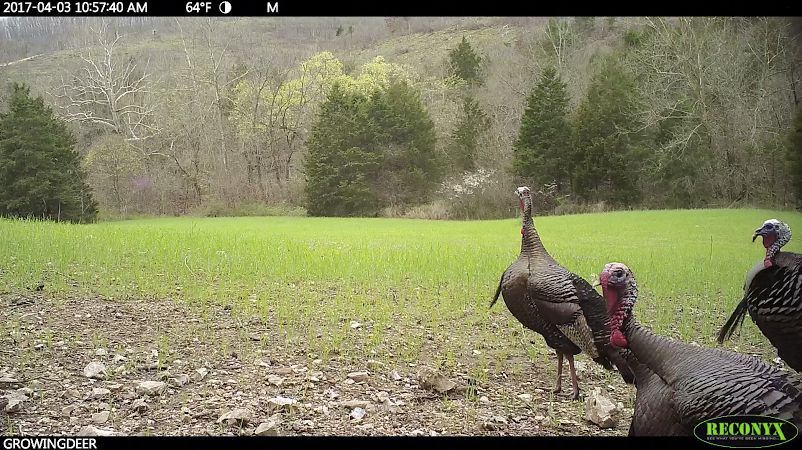
An additional step we take is to place the camera low on the tree – about the height of a turkey. Turkeys seem to look best when viewed from their level.
Trail cameras can be a great tool for scouting for turkeys. For M.R.I. (most recent information) I keep a BoneView in my turkey vest. BoneView is a card reader designed specifically for smart phones. When I walk by a trail camera while turkey hunting I simply pull the card and view the pictures on my phone.
Enjoy Creation,
Grant
Trail Camera Checklist
July is an exciting month for deer hunters. Antlers are starting to develop, and we’re busy trying to prepare gear, shoot our bows, and trim shooting lanes. This is also a popular time of the year to monitor deer herds with trail cameras. Our Reconyx cameras are in the field picking up potential his list bucks and observing does with fawns to ensure the population is healthy. It’s important that each trail camera is placed appropriately so images are clear, and days are not wasted in the field. It’s very annoying to waste a week of images because you left without aiming the camera and making sure all objects were clear from the field of view.
Important things to check before leaving the camera site:
- Battery life – Double check that there is enough battery life to run the camera until you return.
- Memory – Make sure a memory card is in the camera and there is plenty of space to save images.
- Date and time – It’s simple to check and will give exact times of when animals moved through the area.
- Turn camera on – It’s a shame how many times we’ve done this, but it’s best to check and double check to see the camera is on.
- Aiming – Watch the video to see exactly how we aim our cameras.
- Clear brush – We use weed eaters to clear brush in front of the camera. This helps ensure clear images of animals with no distractions.
- Attracting the animals – Using an attractant or mineral like Trophy Rock FOUR65 will help lure the animals into view.
Using this check list will help you capture more images as well as higher quality images!
For love of the land and the Glory to God,
Adam
Finding Patterns Of Hit List Bucks
July is officially here! This is the time of the year when most hunters are starting to gear up for season! Antlers are really taking shape. At The Proving Grounds hit list bucks are starting to show up on the trail cameras. These bucks are frequently visiting our Trophy Rock mineral stations on the edges of our soybean plots.
Since these bucks are appearing on a regular basis it’s easy to get caught up looking at antlers. Once hit listers have been clearly identified, it’s time to start planning. This is the time when it’s important to begin making connections with these hit-listers. We save and review past images and videos of hit list bucks throughout each season. When we review this information closely, general trends begin to appear in their movement. These trends may reveal preferred feeding and bedding locations throughout a season, location of most daylight activity, and most active scrape used. These preferences are often dependent on the current conditions. The trends found in the data will often suggest the best places to hunt when similar conditions occur this coming fall. Finding these patterns in a buck’s movements before season arrives gives you a huge advantage.
When the weatherman calls for a cold front or even a warming trend, you can now make solid prediction on where to hunt. This simple off season task can be the difference in tagging a mature buck every season. This is valuable information to any hunter! To help look for trends you can search your local historical weather at Weather Underground. Take the time now to review your trail camera images and find these hidden trends. Waiting too late can often result in missed opportunities. Be on the front end of this deer season!
GrowingDeer together,
Matt
Low Impact Scouting
As the countdown to opening day continues, many hunters throughout the whitetail’s range are keeping a close eye on their trail cameras. Trail cameras are a great way of monitoring a deer herd, and they can provide a great amount of insight to a specific buck’s personality and habits. But, if used carelessly, trail cameras can be very destructive, and could make harvesting that hit list buck even more difficult.
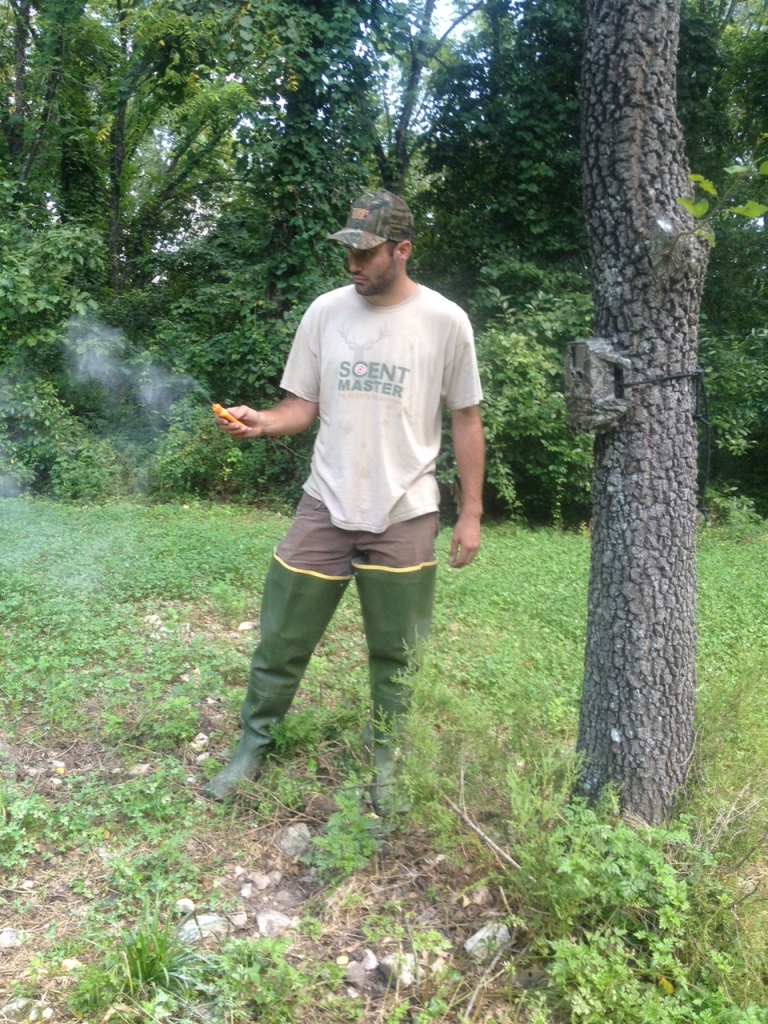
Wearing scent controlling boots and being cautious of the wind are very important in low impact scouting.
How to use trail cameras can vary greatly from property to property. For many hunters, the deer they are hunting may be conditioned to a truck driving by or some sort of human activity. Unfortunately, for the majority of hunters, this is not the case. Many of us are pursuing deer that are not conditioned to human traffic. If the right precautions are not taken, the simple task of checking trail cameras can spook and educate a lot of deer. Hunters who are pursuing these deer need to be extra cautious when entering their property to check trail cameras. Try using these three low impact scouting techniques:
- Approach camera sites with a favorable wind
- Check cameras in the middle of the day when deer are least active
- Leave the least amount of scent as possible
Everyone is excited and eager to see what bucks are showing up at their favorite hunting spot, but don’t barge in without the proper wind and time conditions. If you do have the right conditions to go, make sure you are in clothes that are clean enough to hunt in and don’t be grabbing every limb or stick on the way in. You might even try wearing a pair of hip waders to further reduce your scent. Incorporating these simple steps into your strategy could be the difference that allows you to tag a hit list buck.
Waiting for the velvet to shed,
Clay O’Dell
New Bucks Equals New Beginnings
Each summer we all anticipate checking trail cameras to see which bucks returned and what new bucks are in the area where we hunt. This builds great anticipation leading up to season. It makes me wonder which buck I may get an opportunity to tag.
As the summer progresses bucks show more of their antler growth potential. I find it very enjoyable to watch bucks develop that I’ve known for years and am constantly looking for new bucks that may be major characters in my life long hunting story.
One of the most rewarding things a whitetail hunter can experience is tagging a buck that he’s been patterning. Being able to experience two, three, or even four years of knowing a certain buck makes finally figuring him out that much more enjoyable.
This past month, here at The Proving Grounds, the bucks have been putting on a lot of antler. We recognize some of the bucks from past years and others either changed antler configuration or shifted their range to include a portion of The Proving Grounds. There has been a new buck showing up that has caught our attention. As he continues to grow we will keep a close eye on him and he just might make his way onto our hit list.
Starting a story with a new buck is always fun and exciting. Do you have a buck that you are watching this summer?
Patiently waiting for fall,
Kyle Karcher
Finding The Flock: Using Trail Cameras For Early Scouting
It’s mid February and for a lot of guys like me, that means cabin fever. Deer season has been closed for awhile now for most of us and the boredom has started setting in! This time of year bores the socks off me and a lot of other people. The only hunting activities we can really get involved in are shed hunting and predator hunting. If you’re anything like me, you’ll usually bury your head in a turkey hunting magazine and dream about the warmer temperatures of spring and all the great activities associated with it.
One important thing I do to prepare for those days is keep my Reconyx cameras out and monitoring the turkeys. Locating the turkeys this time of year shouldn’t be a problem for anyone. Find the food, find the turkeys. To make things even easier, this time of year turkeys are usually grouped up in large flocks and could even reach numbers in the hundreds! We’ve received several pictures recently of these type of flocks and have shared them with you on our Facebook page. Many of you have asked questions about why the turkeys are in such big numbers and if they will stay like this until turkey season gets here.
During the summer and fall the turkeys will usually be in smaller flocks, mostly hens with this year’s young and other flocks of mostly males. As the winter progresses these smaller flocks will start frequenting the same food sources and by this time of year they’ve combined to make larger flocks. At this stage of the year they are sorting out dominance. The toms will spend a great deal of their time in “strut” trying to display that they are “The MAN!” Observing these flocks can be very entertaining! The hens are going about their business trying to eat and survive the winter, while the toms are fighting, strutting, and doing everything in their power to become “The Man.” Once they’ve established their pecking order and the spring progresses, they will begin to breakup in smaller flocks and begin their breeding season.
It’s always a fun time of year to watch the spring approach and the turkeys begin their ritual! Preparation for turkey season begins now, so be sure to get those cameras out and find the flocks and watch it all unfold!
Daydreaming of long spurs and gobbling turkeys,
Adam
Using Trail Cameras: Where Are The Mature Bucks?
I often share about using game cameras to find and pattern mature bucks. This usually results in questions posted on my Facebook page from frustrated hunters that have tried the same technique and failed. They state they know there are mature bucks where they hunt but seldom get pictures of them on their cameras.
There are several likely reasons this occurs. It could be as simple as they are using poorly built game cameras that make too much noise when taking a picture and/or have such a slow shutter speed that mature/alert deer have moved out of the camera’s view before it takes a picture.
I use Trophy Rocks to bring deer in front of my cameras. I use Reconyx cameras as they’ve been shown time and time again to have a faster trigger speed, if not the fastest, of any game camera on the market. They are also extremely quiet when operating. I learned years ago it was better to pay more for a good quality game camera and have one that will work properly for years versus buying a less expensive camera and having to replace it frequently and get low quality pictures and alerting mature bucks.
Even if your equipment is working well, there’s still another factor that impacts the success or failure of locating and patterning bucks with trail cameras. Most hunters don’t use any scent control when checking trail cameras. The same hunters wouldn’t think about hunting a stand without checking the wind and/or using some process to reduce their odor.
I prefer to wear clean boots and treat them with Dead Down Field Spray before going to a camera site. It’s easy to grab a trail camera with sweaty hands and pull the card/check the batteries. However, doing so simply leaves a substantial predator odor imprint exactly where I don’t want bucks to be alert. That’s why I use Dead Down Wind Field Wash Cloths to remove odor from my hands and the camera.
These simple steps can play a big role in finding and patterning a good buck, and ultimately lead to tagging him! Ignoring these steps can result in alerting mature bucks during the early season and sending them into nocturnal mode before the hunt begins.
Growing and hunting deer together,
Grant
Whitetail Bucks In Summer Velvet: How Big Will He Be?
I receive a lot of questions this time of year about what percentage of a buck’s antlers have been produced to date. The questions are usually phrased “Will the antlers double in size between now and when the velvet sheds?” or “Will he grow more points and tine length before hunting season?”
These are great questions and they are difficult to answer with certainty! First, bucks are unique individuals just like humans. Some folks seem to grow a bunch early during their life while others have a growth spurt later. Some bucks will show a lot of antler growth early while others seem to add a bunch to their rack during July.
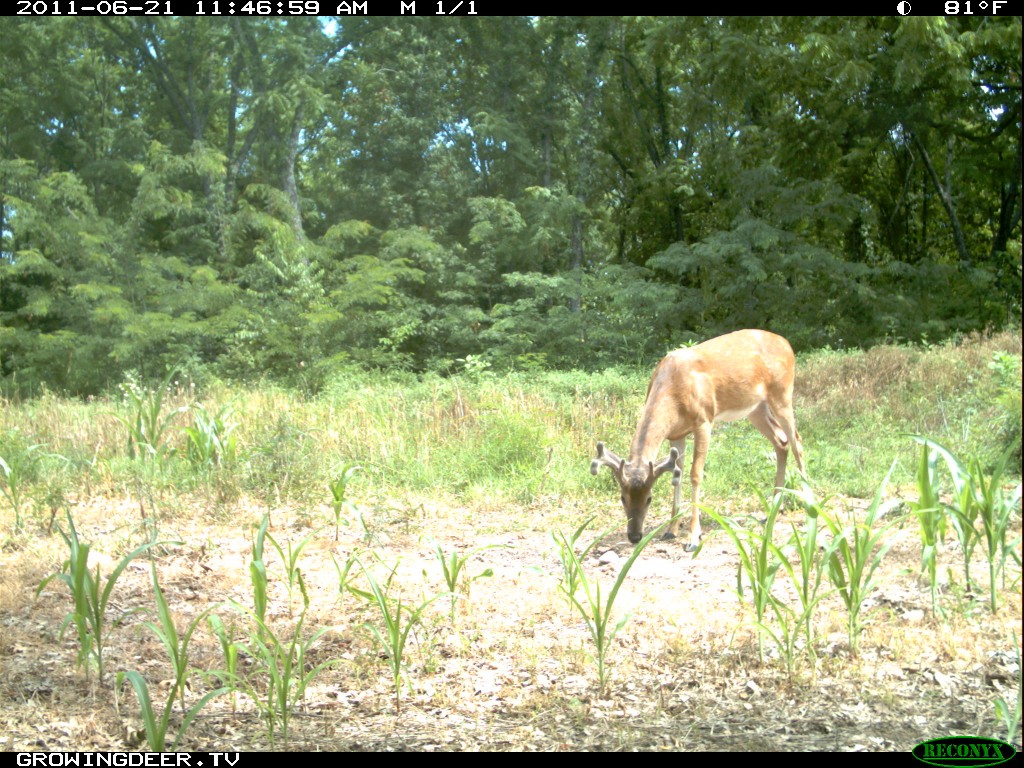
Scouting for bucks in mid June is a great way to estimate the quality of bucks that will be in the area when season opens!
Bucks will have most of their beam length developed by this week. Most of their points will be showing by mid June. Some bucks will have all points showing and some will add a few points. However, tine length is likely to be less than half developed at this time. That’s a big factor as tine length usually makes up about 40% of total gross score!
Mid June is a good time to begin scouting for mature bucks. I use both my Reconyx trail cameras and Nikon binos! Remember that mature bucks clearly have some level of memory. Therefore make sure to use good scent control techniques when checking trail cameras this time of year! The guys and I here at The Proving Grounds use Dead Down Wind. It’s based on safe enzymes – not harmful bactericides like most other products on the market. The best time to check your trail cameras is the middle of the day when deer are most likely to be bedded down.
We are seeing lots of daylight deer activity right now at The Proving Grounds. Deer are hitting our food plots hard in the early morning and late afternoon. We’ve been excited to see a good number of fawns and a significant number of velvet antlered bucks. Remember that antlers in velvet look much larger than what you will actually see this fall.
Scouting for bucks is a great way to estimate the quality of bucks that will be in the area when season opens!
Growing and hunting deer together,
Grant
Turkey Hunting: Scouting Made Easier
It’s March 14th and we’re almost a month away from Missouri turkey season! Most people who know me know that I am absolutely obsessed with spring turkey hunting! I love the months of March, April, and May for many reasons: the fishing is picking up, the woods are greening up, the morel mushrooms are popping out of the ground and most important the turkeys are doing their spring rituals! One of the biggest reasons I love chasing turkeys every year are the memories from past years that resurface every time I’m out there. My first turkey with my father (on what is now my favorite place in the world to chase turkeys), my first turkey taken when hunting and calling by myself, my four bearded turkey killed moments before getting completely soaked in a thunder storm and so many more. Reasons for having so many memories are due to the fact that I was turkey hunting with my dad years before I was a deer hunter.
Thinking back to the early days of turkey hunting, I can’t help but look at the amount of change that has occurred. Early in my career you went to locations where turkeys were known to roost and you waited to hear a gobbler then you made your move. It’s 2013 now, and although season is over a month away my scouting has already started, thanks to our Reconyx cameras. Yesterday we began setting our Reconyx cameras to time lapse. We do this so we can scout over fields where turkeys are likely to be active, but still out of range of our motion sensors. Common trail cameras without the time lapse feature would most likely miss an old tom that was strutting a hundred yards away in the field. We position our Reconyx cameras to overlook our food plots and then set the time lapse interval to every 15 minutes. Once this is done we now are scouting our food plots without even getting out of bed in the mornings.
With our Reconyx cameras set up with time lapse on our food plots we are officially scouting and preparing for the first day of turkey season. When that first day arrives we will hit the woods with complete confidence on where and when to go!
Turkey seasons are already open in some states and are soon to open in others. Always stay safe and best of luck to all!
Daydreaming of long beards and long spurs!
Adam



